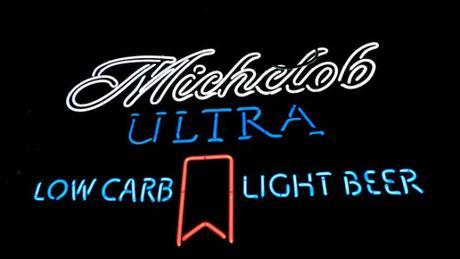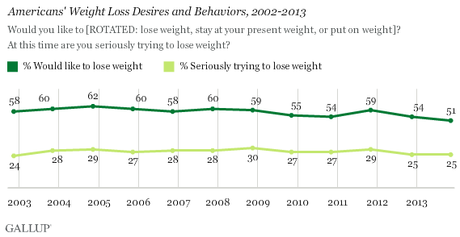
There's an interesting dichotomy going on in the world of beer right now. Bearded drinkers across the country are craving double IPAs, imperial stouts and high-octane brews that could make them keel over.
Yet on the other side, there is a segment of people who aren't just interested in the growing prowess of beer, but their waistlines as well.
Last year, I wrote about the wild growth of Michelob Ultra in the face of other macro domestic brands. While craft beer is booming, it seems this beer-branded sports drink is doing pretty well, too. Consider the sales percentage growth over the past four years, as reported by sports business analyst Darren Rovell:
Craft beer sales may be booming, but the rising interest of Michelob is only compounding year-to-year. Most of all, there are several indicators to suggest it won't be losing steam any time soon.
They key to all of this, of course, is our broader cultural interest in health and wellness. And to be clear, this isn't a new trend.
Instead, it's been gaining steam for years. From 2007 to 2012, there was a 96 percent increase in the availability of lower-calorie food products. Overall, that segment accounted for 99 percent of the almost $500 million sales growth for 16 major food companies during the five-year span.
As our "foodie" culture has grown, so too have our expectations and understanding of wellness. Half of major products you see now have a health claim on packaging in order to provide some kind of transparency or comfort to consumers. Millennials, beer's driving cohort, have grown up with a more sophisticated understanding of nutrition than previous generations.
All this is starting to show in how we drink, too.
A potential trend for 2015 in the wine world? Low-calorie options. Just last week, Diageo, an international alcohol beverage company, announced it start posting nutritional labels on its products, which include well-known brands like Johnnie Walker, Crown Royal, Smirnoff, Cîroc and Ketel One vodkas, Captain Morgan, Baileys and Guinness.
"The consumer is at the heart of everything we do, and making serving facts information available to people in an easy to understand format is what, according to our research and polling, today's consumers want," Peter McDonough, the company's president of marketing innovation said in a press statement.
Which all points to why AB InBev will now set aside the most ad money it's ever spent to promote Michelob Ultra, surpassing the $50.8 million spent in 2014. In addition, Michelob Ultra is the latest macro to get a packaging update, following in the steps of Big Beer brethren Budweiser, Miller Lite (which saw great success) and Coors Light.
Most important, Michelob Ultra plays directly into our American psyche - one that wants to be healthy, but doesn't want to take drastic steps. Take this Gallup poll, which highlights 51 percent of adults who said they want to lose weight, but just 25 percent said they would seriously work toward that goal. This discrepancy has existed for years:

Whether we realize it or not, the health-conscious drinker is a big part of our beer world, especially one where we want to consider our health, but take the easy way out of changing habits.
Like other lower-calorie options that push their niche within the marketplace, Michelob Ultra has found a rare sweet spot in today's beer industry among the 7 percent ABV IPAs and 10 percent (and higher, of course) stouts. Our options for beer may be ever-expanding, but that doesn't mean everyone wants their waistlines to follow suit.
Related: Is the Fastest-Growing Domestic Beer a Key for Beer Marketing?
+Bryan Roth
"Don't drink to get drunk. Drink to enjoy life." - Jack Kerouac

